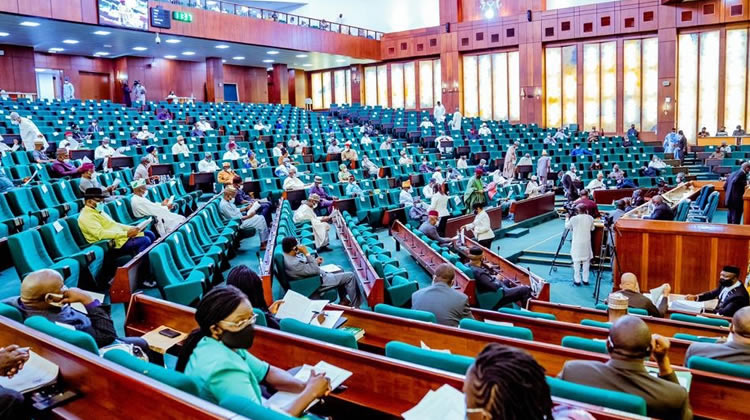
The House had invited regulators and operators in the telecommunication sector over poor coverage and spread of their services in Nigeria.
While the Executive Vice-Chairman of the NCC, Prof Umar Garba Danbatta, appeared before the House, other invitees, including the Federal Ministry of Communication and Digital Economy, MTN Nigeria, Airtel Nigeria, Globacom and 9Mobile, either sent representatives or failed to appear before the parliament.
According to the notice issued by the ad hoc committee, others to appear before the panel are the Governing Board of the USPF, Accountant General of the Federation, Auditor General for the Federation, Federal Inland Revenue Service, telecommunication equipment vendors in Nigeria and civil society organisations.
They were, therefore, summoned by the House’ Ad Hoc Committee on the Need to Investigate Failure/Inability of the Nigerian Communications Commission to Promote Widespread Availability and Usage of Mobile Telecommunication Network Services throughout Nigeria As Well As Accruals/Utilisation of Funds in the Universal Service Provision Fund.
The committee, while grilling Dambatta, queried the 1014 projects under the USPF, including an e-library project that was carried out to the tune of over N2bn.
The lawmakers faulted a request by the NCC for N700bn to ensure that 27 million Nigerians have access to telecommunication coverage.
Chairman of the committee, Bamidele Salam, pointed out that there was no specific description of what was done in the contracts as they were couched in a manner that they would be hard to track. According to him, 80 per cent of the projects had no specific location.
Consequently, the committee resolved that the NCC should provide the specific address, description and specification of each of the projects whose contracts were awarded and listed in the 91-page document submitted to the panel by 2pm on Tuesday.
Salam said, “There is a list of contracts awarded by the USPF since inception provided for us here, which is about 1014 various contracts on which a few observations have been made. There is also the submission of the annual audited report of the USPF which has been from 2007 till date, but a few years missing from the audited reports. A few observations have been raised out of that and I want members to let us address those issues so they can take the answers holistically.”
As part of his responses, Danbatta said the USPF regulations stipulated that the NCC would determine the contributions to the Fund from time to time.
The lawmakers, however, argued that a regulation made by the NCC cannot supersede its enabling Act.
A member of the committee, Mark Gbillah, said, “The challenge is that the NCC has given itself the power to annually decide what it is going to annually allocate to USPF. Looking at the documents presented, administrative expenses rose from N19m to N127m. The expenditure on staff rose exponentially.
“Let me say that it is important for the NCC to let us know the premise on which you annually determine to allocate the USPF or otherwise and what annual allocation they have proposed and implemented from inception till date.
“We need to know what the funds have been used for. For instance, the e-library alone you spent over 2 billion on e-library. How functional is the library based on the amount that has been allocated to them when a lot more should have been allocated in my opinion to the deployment of Base Transceiver Stations to have more coverage across the country.”
Another lawmaker queried why in 2015, despite the staff strength reducing from 48 to 45, there was an almost 100 per cent increase from N434m to N824m in its wage bill.
Earlier, Danbatta recalled that in 2013, there was a consultancy driven by the NCC to identify clusters of access gaps in the country. He said since then through the Commission’s efforts the number of people without access had been reduced to 27 million.
He said, “What we have done to bring telecom services to people living in rural, unserved and underserved areas of this country, totalling 37 million people courtesy of the consultancy that was conducted in 2013.
“By 2019 we had succeeded in reducing the clusters of access gaps to 114 through the deployment of the necessary infrastructure needed to bring services to people living in rural, unserved and underserved areas of the country. This deployment of infrastructure is the base transceiver stations.”
The NCC boss added, “I am going to give information about the base transceiver stations we have so far. This resulted in the reduction of Nigerians in those clusters from 37 million to 31 million in 2019. By 2022, we had reduced the clusters of access gaps to 97, from 207 in 2013.
“The number of Nigerians (without access) again has come down from 37 million in 2013 to 27 million as we speak. How did we achieve this? We achieved this by deploying from 2009 to 2011 a total of 79 base transceiver stations. In 2013 to 2018, we deployed an additional 124 base transceiver stations. From 2019 to 2022 we deployed a total of 364 base transceiver stations. The total number of base transceiver stations we have deployed to date is 567 as we speak. This is a landmark.
“Arising from the deterioration of the exchange rate of the naira to the dollar, we have a figure of approximately N700bn. It is the total amount required to completely bridge the gaps within the clusters that I have stated earlier. This is not a tall order. It can be done.”





